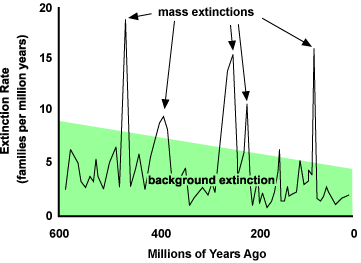In the U.S. and worldwide, over the past several years we have seen removing important regulations that were created out of crises. When enacted and enforced, regulations can greatly protect our health and save lives! Deregulation is a popular buzz word for many to rally behind out of ignorance that seems to value profits over lives. For this month’s last blog on health topics, I will focus on the current epidemic. Next month, I will focus on the beauty of nature and environmental regulations that are being revoked to examine potential ramifications.
The current coronavirus epidemic that began in China and is spreading like wildfire with no vaccine appears to have begun by animal transmission to humans. Check out today’s Bloomberg Quick Take video (sorry for the YouTube ad) that shows the spread of the virus worldwide. It began in China on December 31, 2019 and was found in Thailand two weeks later and then rapidly spread across several continents by people infected before symptoms became apparent.
I just learned that people are eating bats and other animals in the same food chain. Check out this article about the “Bat soup girl” which states, “Like its deadlier cousins MERS (Middle East respiratory syndrome) and SARS (severe acute respiratory syndrome), the new strain is believed to have jumped from animals to people and then mutated to enable human to human transmission.”
In the United States, the Food and Drug Administration (FDA) is working with U.S. Government partners, including the U.S. Centers for Disease Control and Prevention (CDC), and international partners to closely monitor an outbreak caused by a novel (new) coronavirus first identified in Wuhan City, Hubei Province, China. “Coronaviruses are a large family of viruses. Some cause illness in people; numerous other coronaviruses circulate among animals, including camels, cats, and bats.”
“The scope of FDA’s regulatory authority is very broad. FDA's responsibilities are closely related to those of several other government agencies. Often frustrating and confusing for consumers is determining the appropriate regulatory agency to contact. The following is a list of traditionally-recognized product categories that fall under FDA’s regulatory jurisdiction; however, this is not an exhaustive list.
In general, FDA regulates:
Foods, including:
Drugs, including:
Biologics, including:
Medical Devices, including:
simple items like tongue depressors and bedpans
complex technologies such as heart pacemakers
dental devices
surgical implants and prosthetics
Electronic Products that give off radiation, including:
Cosmetics, including:
Veterinary Products, including:
Tobacco Products, including:
cigarettes
cigarette tobacco
roll-your-own tobacco
smokeless tobacco”
So regulations that protect our health are much different in various countries. Ironically, as is being witnessed with the coronavirus, the regulations and eating habits of one country can affect us all.
Here are some other federal agencies that create important regulations.
Consumer Product Safety Commission (CPSC): enforces federal safety standards
Environmental Protection Agency (EPA): establishes and enforces pollution standards
Equal Employment Opportunity Commission (EEOC): administers and enforces Title VIII or the Civil Rights Act of 1964 (fair employment)
Federal Aviation Administration (FAA): regulates and promotes air transportation safety, including airports and pilot licensing
Federal Communications Commission (FCC): regulates interstate and foreign communication by radio, telephone, telegraph, and television
Federal Deposit Insurance Corporation (FDIC): insures bank deposits, approves mergers, and audits banking practices
Federal Reserve System (the FED): regulates banking; manages the money supply
Federal Trade Commission (FTC): ensures free and fair competition and protects consumers from unfair or deceptive practices
Food and Drug Administration (FDA): administers federal food purity laws, drug testing and safety, and cosmetics
Interstate Commerce Commission (ICC): enforces federal laws concerning transportation that crosses state lines
National Labor Relations Board (NLRB): prevents or corrects unfair labor practices by either employers or unions
Nuclear Regulatory Commission (NRC): licenses and regulates non-military nuclear facilities
Occupational Safety and Health Administration (OSHA): develops and enforces federal standards and regulations ensuring working conditions
Securities and Exchange Commission (SEC): administers federal laws concerning the buying and selling of securities
The Brookings Institution is tracking deregulation in the Trump Administration. Recall in 2018, the change to remove federal pork inspectors and let the industry do the inspections? The NBC News article quotes the executive director of Food and Water Watch, “it is irresponsible for the USDA to expand a radical change to food safety responsibility in the pork industry based on a pilot program that clearly failed to show that allowing companies to inspect themselves can produce safe food.”
But in 2019, the Center for Disease Control stated the outbreak of Listeria infections can come from pork products! It is also well know that we cannot eat raw or under-cooked pork products which cause serious illness.
On an international scale, the World Health Organization (WHO), “aids countries to strengthen regulation, including post-marketing surveillance, and to eliminate substandard and falsified medicines. It also develops international norms and standards, so that countries worldwide can regulate health products and technologies consistently. In parallel, WHO facilitates access to quality-assured, safe and effective health products by assessing medicines, vaccines and medical devices for priority diseases.”
What does WHO say about coronavirus? “Common signs of infection include respiratory symptoms, fever, cough, shortness of breath and breathing difficulties. In more severe cases, infection can cause pneumonia, severe acute respiratory syndrome, kidney failure and even death. Standard recommendations to prevent infection spread include regular hand washing, covering mouth and nose when coughing and sneezing, thoroughly cooking meat and eggs. Avoid close contact with anyone showing symptoms of respiratory illness such as coughing and sneezing.”
Late this evening, WHO declared a global health emergency!
So maybe we needed to reconsider “deregulation” and actively debate ReRegulating common sense rules not only to save lives in the U.S. but worldwide as we are all interconnected on this Earth.





